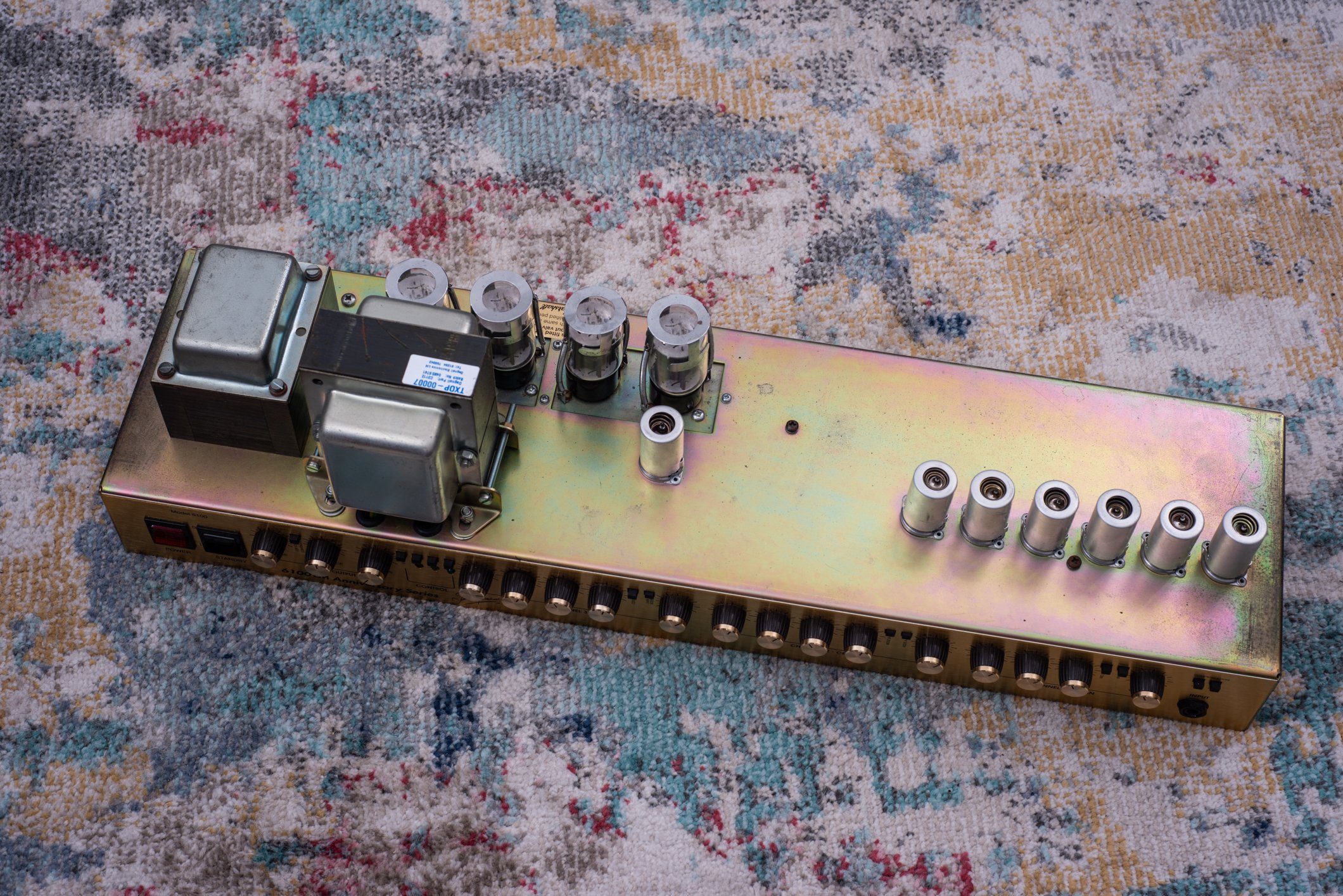1997 Marshall 6100LM Anniversary
Specs
3 Channels
4x 5881 Power Tubes
6x 12AX7 Preamp Tubes
MIDI switchable
Crunch channel has 3 modes - JTM45, 1959SL, JCM900
“Lead Mod” version
Overview
I’ve actually had two or three of these, but this is the one I held onto long term since it is a late model, and unmodified.
First, a little history. The introductory run of 6100 series amps started in 1992, with a limited run of polished brass panels and blue tolex to celebrate Marshall’s 30th Anniversary. These have silk screened text saying “30th Anniversary 1962-1992” on the front panel, EL34 power tubes, and even the transformers had the brass plating. Originally, these amps were designed to be a 3-channel amp in the JCM900 series, which then had the single channel (2100, 2500) Mk III and two channel (4100, 4500) Dual Reverb. Instead it was decided to release it as a separate line, but you can tell by the model numbers how it was originally planned to fit into the lineup (2100, 4100… 6100). This plan would eventually come to fruition for the JCM2000 series with the DSL and TSL. After the limited run of 800 made, standard amps were made in both blue and black tolex, but without the polished brass appointments. Blue tolex 6100’s were only made in 1992-1993. EL34’s were phased out in favor of 5881’s around 1994 due to supply and reliability issues with sourcing EL34 tubes, and many of these amps have a front panel sticker that says “5881.”
The 6100 was groundbreaking for the time, with a plethora of features but all analog tube tone. The three channels are midi switchable, it a XLR compensated line out (a feature also seen on the TSL), an effects loop, speaker damping switch, pentode/triode and low/high power modes. As for the 3 channels, channel 1 is a clean, and the first time I can find that Marshall used a tone stack located before the drive stages, like a Fender, on a channel switcher. This clean channel is no traditional “Marshall” clean, it has a ton of headroom, a naturally scooped character, with extended highs and lows. It also has a bright and mid shift button to further customize the tone - the bright especially is very useful. Channel 2 is the crunch channel, and this is considered one of the best channels Marshall has ever made - if this were its own separate amp, it probably would’ve sold. There are two switches, labeled A-B and B-C, which allows you to switch between 3 different modes, loosely tied to classic sounds. Mode A is a JTM45, which has a looser low end, rolled off highs, and a good mid gain grit. Mode B is a 1959 Super Lead Treble channel, which introduces much more gain, reduces the lows, and easily covers the sounds of the past 2 decades of rock music, and even metal when boosted. Mode C is a JCM900, which introduces substantially more gain, as well as adding some more lows back in for a more modern tone somewhere in between the 2100 and 4100 JCM900 amps - it’s kind of its own thing, not an exact clone of another JCM900 model. Channel 3 is the lead channel, which has a gain boost and contour switch, and is very similar to Mode C of channel 2, but with separate controls. The amp also has an overall master volume, presence, and a front panel effects loop mix control. Other features like the high and low input compensation and low volume compensation are neat, but I usually leave them off.
The key term on my particular example is the “LM” designation, which is short for “Lead Mod.” Basically, it’s a higher gain channel 3. It’s fairly common to mod these amps back to the original 6100 spec, but I really like the extra gain of the LM on this amp, and conversely some 6100’s are modded to the LM spec. These LM amps were introduced sometime in 1995, and ran until these were discontinued in early 1998, making way for the JCM2000 series, with the Dual Super Lead being introduced in 1997.
























